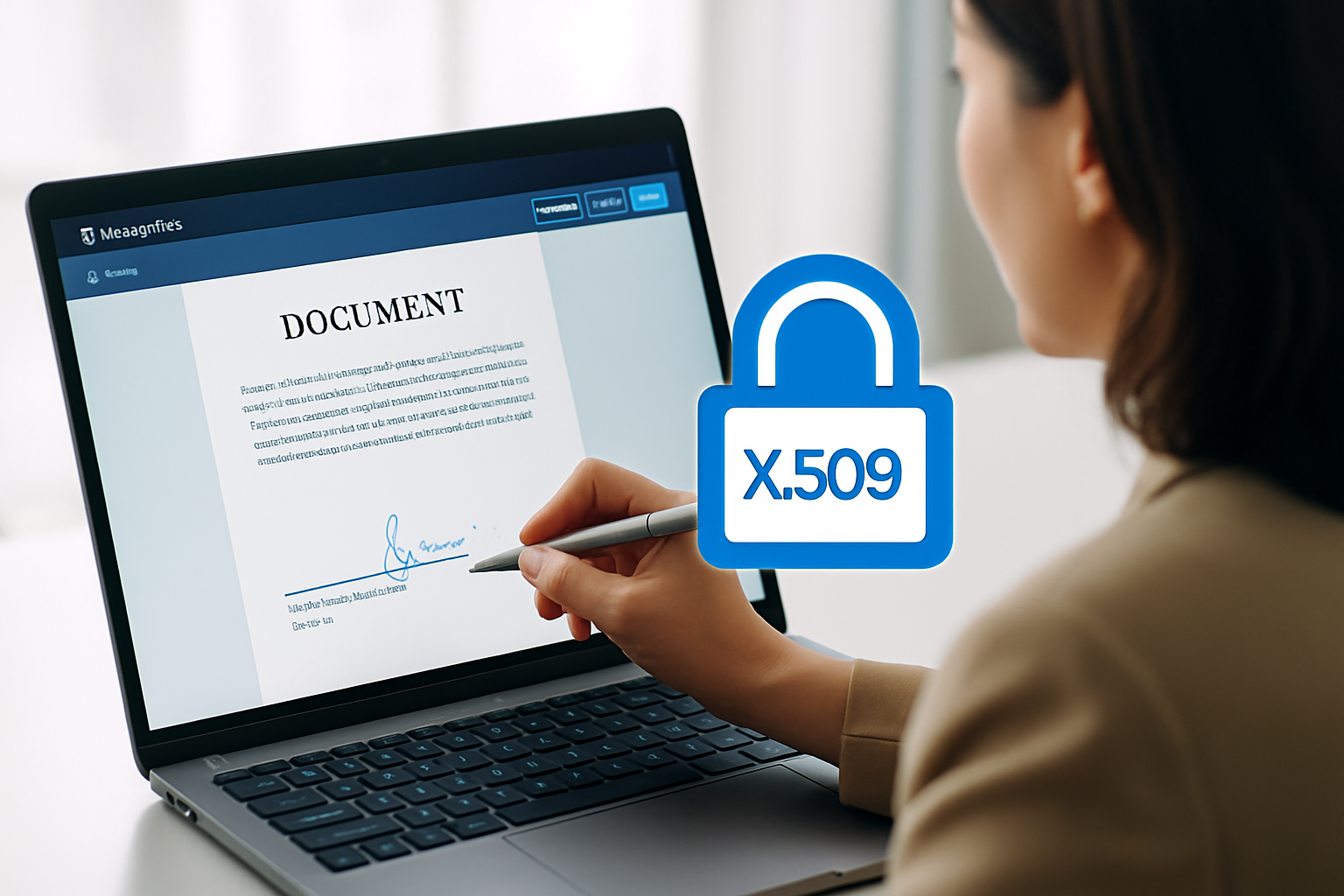
Overview
Purpose of the Article
This article explains how to use a non-SSL X.509 digital certificate—such as those issued by Identrust—for signing documents during a digital signing session on Notary Hub. These certificates are used to apply a tamper-evident, legally recognized digital signature on notarized documents and are a required component for remote online notarizations (RON) in many states.
Who Should Use This Guide
This guide is for notaries using a third-party certificate authority—like Identrust—to apply a non-SSL X.509 certificate during a Notary Hub signing session.
Key Takeaways
- Understanding how to use a third-party digital signing certificate in Notary Hub
- How to select your certificate during a signing session
- Troubleshooting and verifying successful application of your digital signature
Prerequisites
What You Need Before Starting
- A Notary Hub notary account
- A valid non-SSL x.509 digital certificate installed on your device (e.g., from Identrust)
- Your certificate password or PIN (if applicable)
Verifying Certificate Application
Once the certificate is applied:
- The document will be cryptographically sealed.
- A tamper-evident marker will be embedded into the PDF metadata.
- A certificate of completion will indicate your digital certificate was applied.
Step-by-Step Instructions
Use Your Certificate During Signing
| Instructions | Visuals |
|---|---|
| Log in to Notary Hub and join the RON session as shown in the "Joining a Signing Session as a Notary" tutorial video. |  |
| Conduct the notary session to the final step of locking the document. | 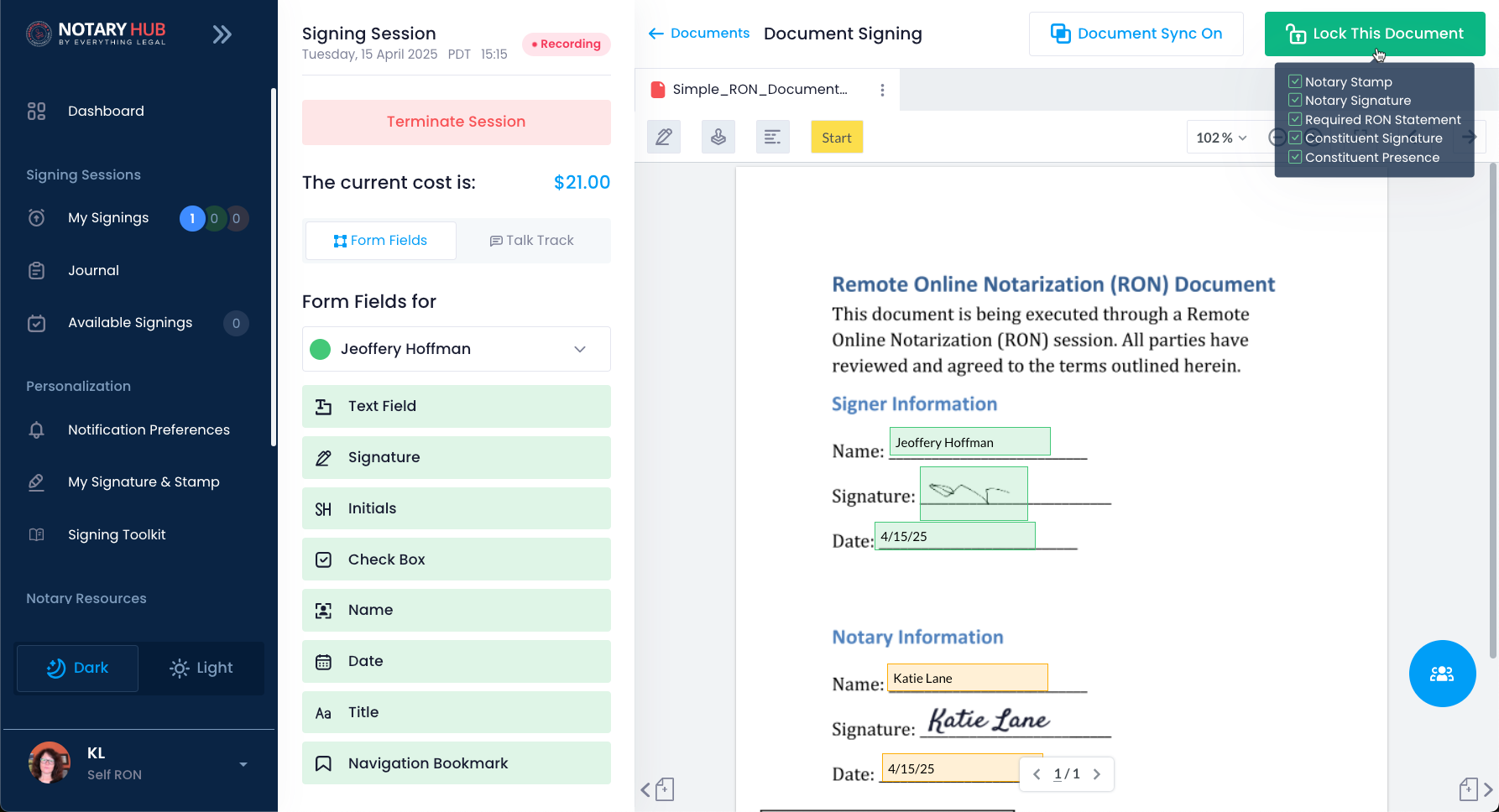 |
| You will see the merged document for review. After reviewing the document, click the blue "Sign this document" button. | 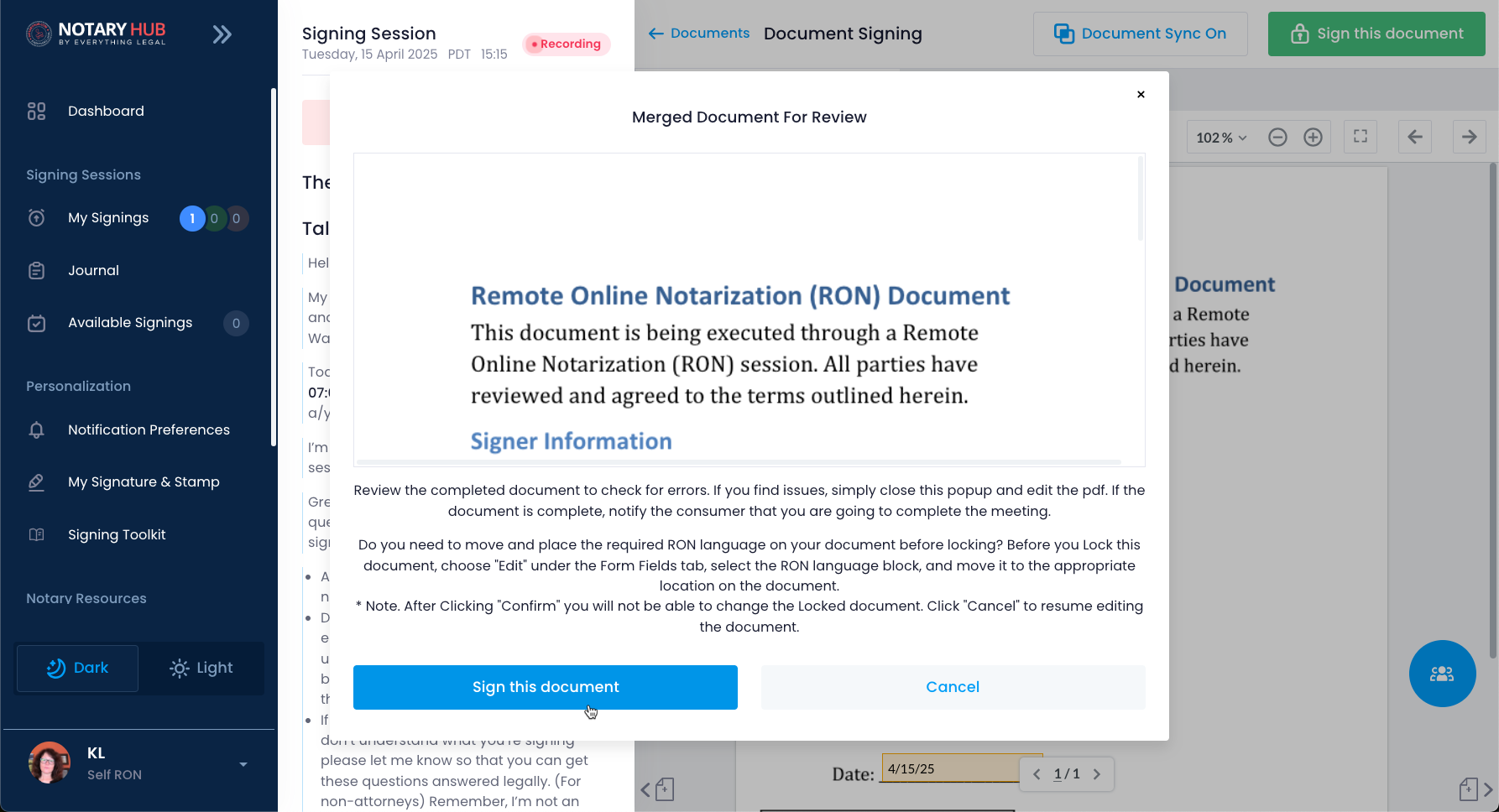 |
| You will be prompted to choose a digital certificate from your system. | 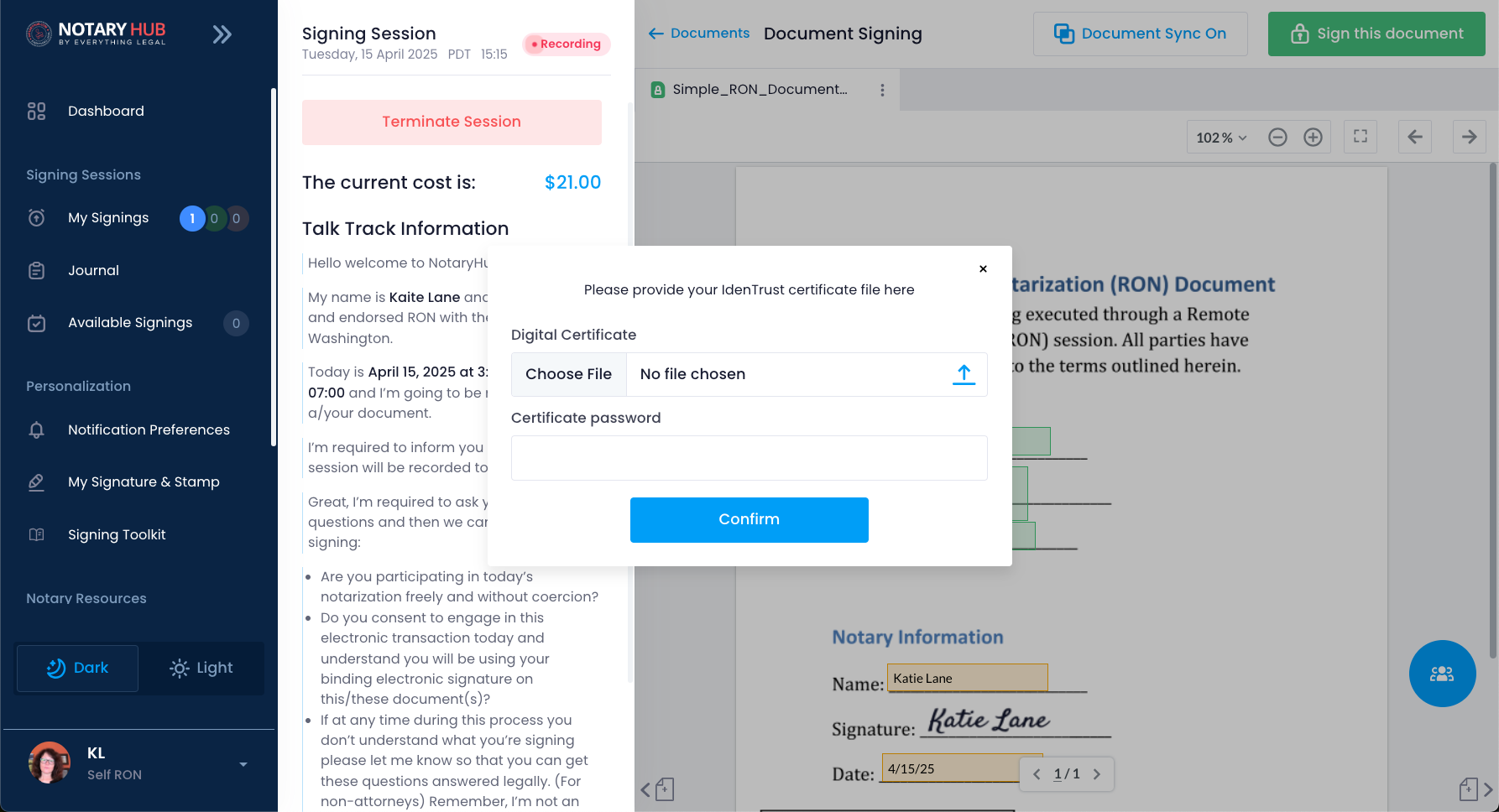 |
| Select the appropriate X.509 certificate from the list (e.g., your Identrust certificate). | 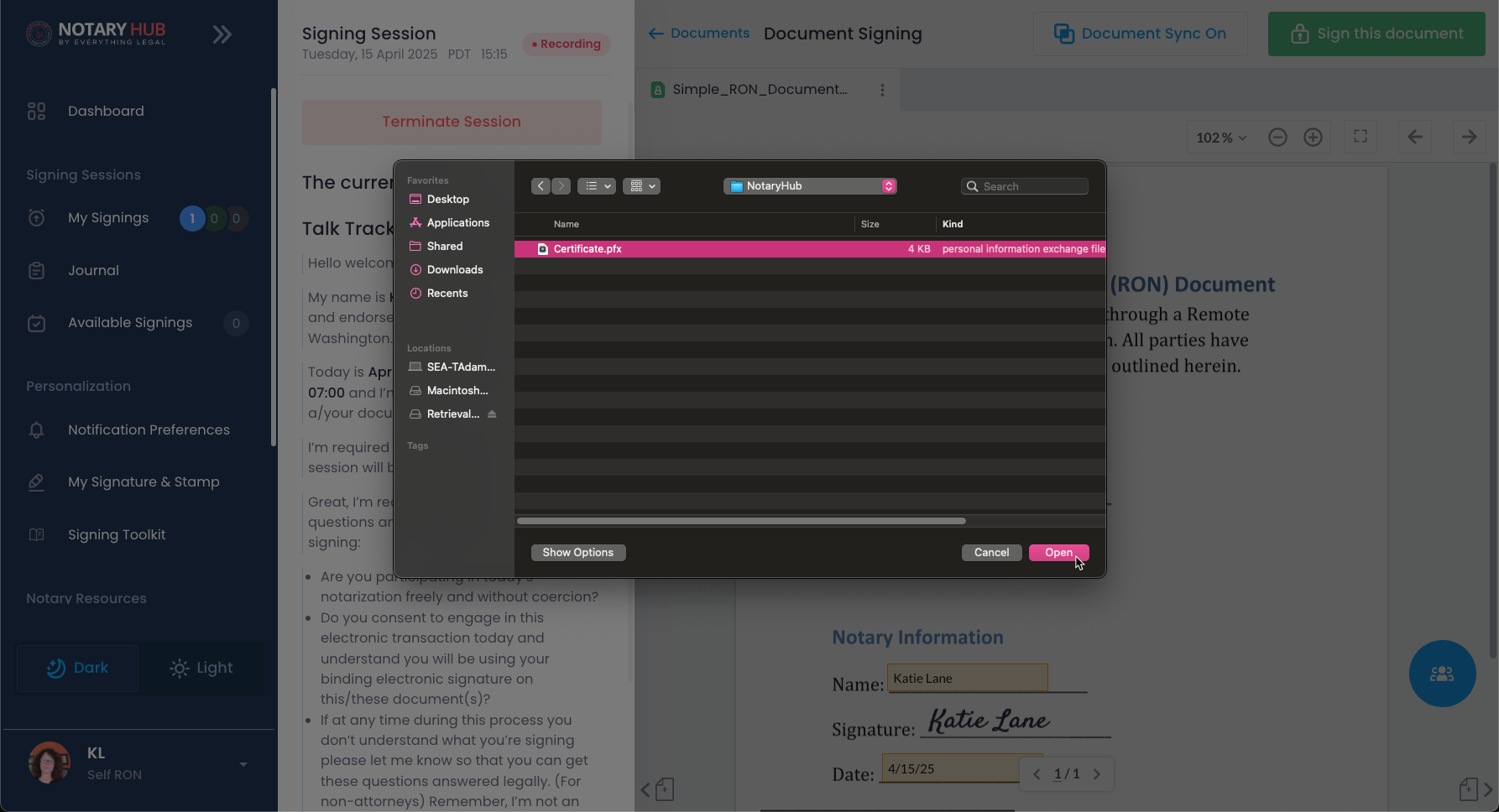 |
| Enter your certificate password or PIN and click the blue "Confirm" button. | 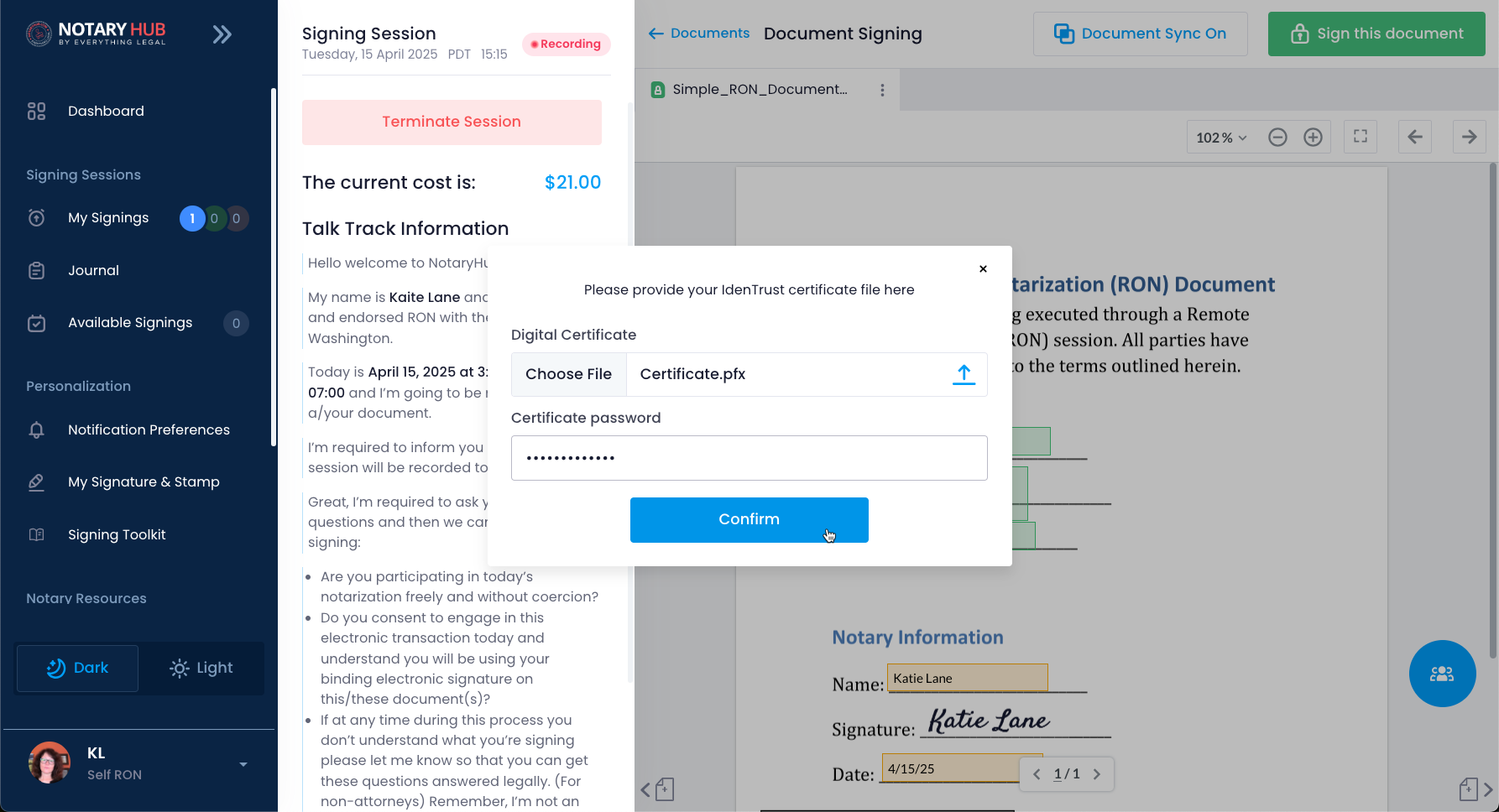 |
| After a successful signature, the document will be signed with your digital certificate. | 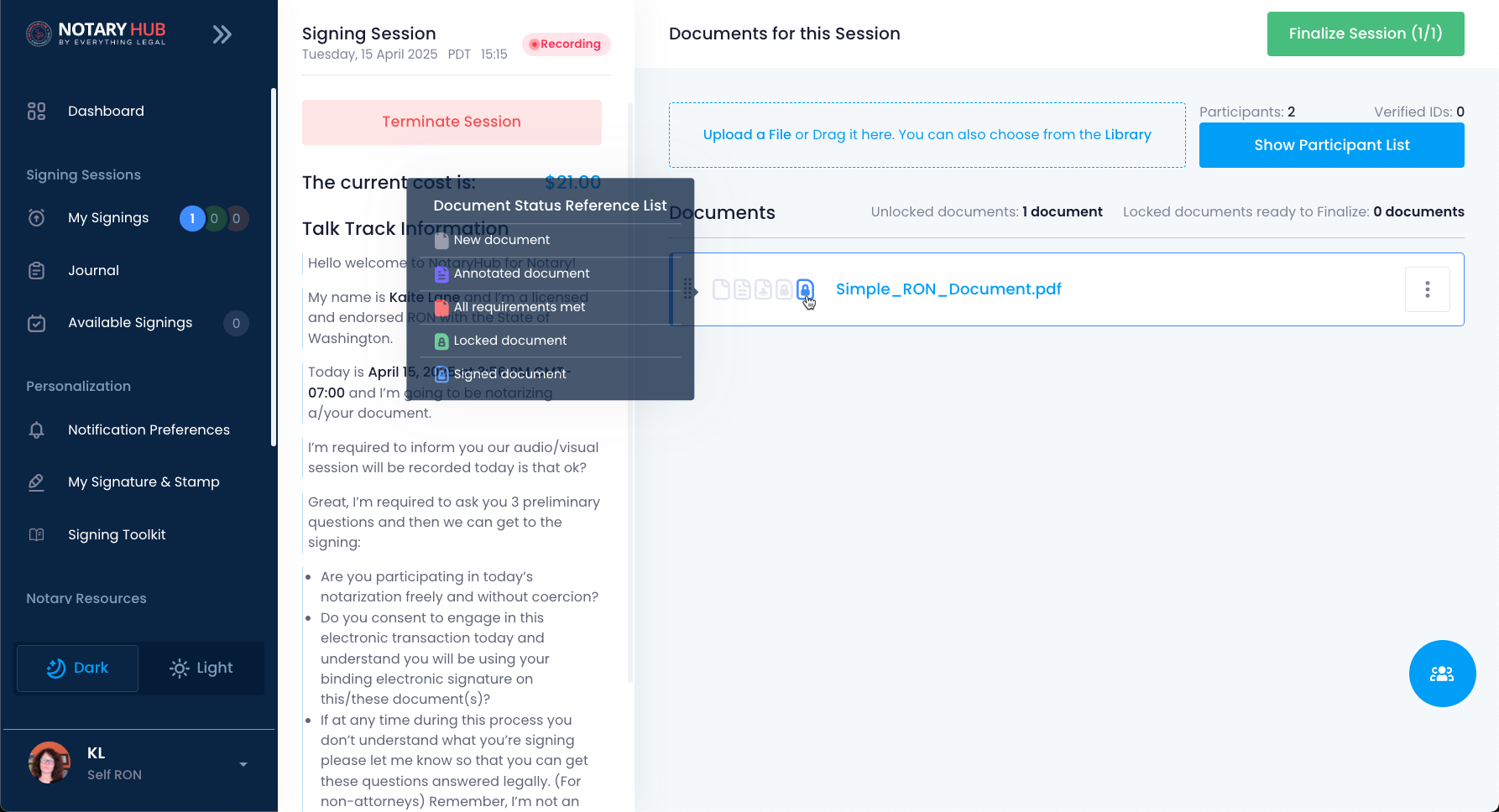 |
Repeat these steps with any additional document(s) and then you can finalize the session.
Troubleshooting & Frequently Asked Questions
Frequently Asked Questions
Q: What if my certificate file type is not accepted by Notary Hub?
- A: Try renaming the certificate file to a .pfx extension.
Q: What is a non-SSL X.509 certificate?
- A: It’s a digital certificate intended for identity-based document signing.
Q: Can I use an Identrust certificate with Notary Hub?
- A: Yes. As long as the certificate is a non-SSL X.509 certificate intended for document signing, it can be used with Notary Hub.
Q: Why doesn’t my certificate appear in the browser prompt?
- A: Ensure it’s installed for the current user, not expired, and trusted by your operating system. Try restarting your browser.
Q: Can I use a certificate stored on a USB token or smart card?
- A: Yes, if the device is connected and supported by your browser, you’ll be able to select it during signing.
Q: Will I need to install any browser plugins?
- A: No. Modern browsers support native certificate selection through the OS certificate store.
Q: Do I have to purchase a certificate through Notary Hub to use it?
- A: No. Notary Hub supports third-party certificates like those from Identrust.
Q: What happens if I lose access to my certificate?
- A: You’ll need to reissue or reinstall it from your certificate provider. Always keep a secure backup.
Q: Is there a validation or authentication step when using a third-party certificate?
- A: No additional validation is required within Notary Hub beyond selecting the certificate and applying your PIN/password during signing.